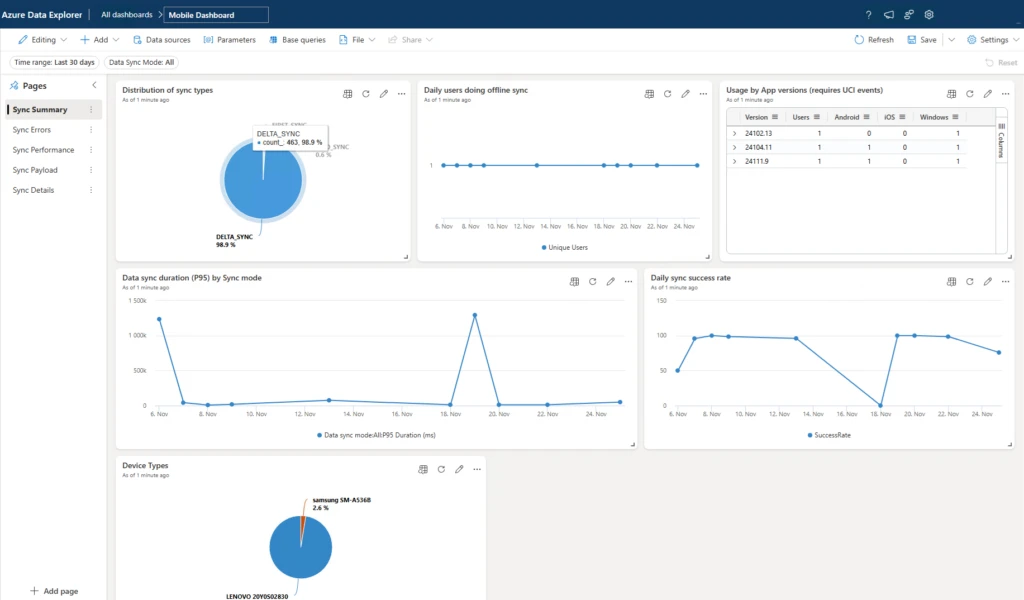
Accelerating sales with unified data in the AI era
This article is contributed. See the original author and article here.
Data is the lifeblood of decision making in the digital age. Almost every interaction a company has with a customer adds to an ever-growing data pool. For sales leaders, the challenge is transforming this raw data into actionable insights that drive delightful customer engagements and ultimately boost revenue.
While organizations collect many types of information, optimizing data in a clear sales strategy can often create blind spots for them. Success is not simply a matter of collecting more data. It’s about having better data—and, more importantly, understanding what to do with it.
Today, AI systems are revolutionizing industries by helping organizations derive insights from data efficiently so they may understand customers in ways never before possible. But to do that, organizations need a platform-centric approach to unify, analyze, and manage data. This is precisely where AI-powered customer profiling supports a shift from reactive decision making by sales teams to proactive customer engagement.
From data overload to strategic advantage
Organizations are sitting on mountains of data. Every interaction, click, or transaction provides potential clues into a customer’s needs and behavior. However, extracting actionable insights from this data can feel like finding a needle in a haystack. For sales leaders, the problem is twofold:
- Siloed data. Customer data is often scattered across different departments—marketing, sales, service—making it difficult to gain a holistic view of the customer.
- Data overload. With so much data available, it’s tough to focus on the insights that matter most, leading to inefficient processes.
This fragmentation leads to missed opportunities to engage customers more deeply. Sales teams frequently report struggling to turn vast datasets into actionable strategies, leading to inefficient engagement. But using AI to convert complex datasets into real-time insights supports personalized, customer-first strategies. That’s how AI-powered profiling creates an advantage.
Learning about your customers vs. anticipating their needs: A change in focus
Forming a deep understanding of customers is a core aim of sales teams. Still, most sellers operate with an incomplete view. Limited visibility into previous purchasing decisions, open issues with the service team, or ongoing engagement with marketing campaigns are all factors that cloud a clear picture of not only how a customer behaves, but why. It’s the difference between collecting information about a customer and understanding how that data can help anticipate and meet the customer’s needs.
It’s imperative for modern sales teams to not only see what a customer did, but gain insight into why they did it—because then you can anticipate their next steps. That’s the promise of AI-powered customer profiling. It provides real-time behavioral insights, supporting sales teams to engage prospects with personalized offers at exactly the right time.
Sales teams can now maintain a much more seamless connection with each customer with continuous messaging, promotions, and events that are tailored to individual behaviors and interests. This shift supports a simplified and more cohesive selling experience—resulting in, according to one recent study, as much as a 15% increase in revenue per customer journey.1
AI-powered customer profiling in action
Here’s how AI-powered customer profiling is reshaping the future of sales:
- Faster sales preparation. Time is money, especially in sales. Traditional sales prep involves hours of research, reviewing transaction histories, and piecing together fragmented data. This manual process is not only time-consuming, but prone to error. Instead of sifting through data, sellers can rely on AI agents to aggregate comprehensive customer profiles instantly, allowing for faster, more effective engagement.
- Crafting personalized offers. Personalization is key, but delivering tailored offers at scale is a challenge. AI can solve this by analyzing customer behavior in real time, identifying patterns and preferences. For example, AI can identify when a customer browsing premium products is ready to purchase and suggest a personalized offer, such as a time-limited discount. This increases conversions and fosters long-term loyalty by showing customers they are understood and appreciated.
- Actionable intelligence for better decisions. AI not only processes data but provides clear recommendations for next steps, whether it’s following up on a lead or prioritizing opportunities. AI’s guidance ensures no opportunity is missed, improving win rates and creating a seamless customer experience.
The Microsoft solution: Copilot and agents to turn data into action
While the promise of AI is compelling, businesses need the right tools to make it a reality. Dynamics 365 Sales and Microsoft Dynamics 365 Customer Insights seamlessly integrate AI into sales strategies, turning data into action. Here are some use cases:
- Unified customer profiles: Dynamics 365 Customer Insights unifies customer data from sales, marketing, and service into a 360-degree view. This real-time profile allows sales teams to see the full customer journey, delivering insights that lead to timely and relevant engagement and more efficient collaboration between marketing and sales
- AI-powered recommendations: With the Sales Qualification Agent in Dynamics 365 Sales, sales teams receive real-time insights on lead prioritization and strategic next steps. This proactive AI assistance allows sales reps to focus on high-impact opportunities, accelerating decision-making and enhancing sales effectiveness.
- Predictive analytics: Dynamics 365 Sales and Dynamics 365 Customer Insights don’t just report on past actions—they predict future ones. By utilizing predictive analytics, sales teams can anticipate customer needs and engage prospects at the right moment with personalized offers that resonate.
- Time-saving automation: Sales automates repetitive tasks, freeing up sales teams to focus on relationship-building. Whether it’s generating follow-up emails or creating personalized reports, AI does the heavy lifting, letting sales reps focus on what matters most: closing deals.
AI-powered customer profiling boosts sales
The future of sales will be powered by Copilots and agents. The ability to transform vast amounts of customer data into clear, actionable insights is no longer optional—it’s essential for staying competitive. AI-powered customer profiling, supported by Microsoft 365 Copilot for Sales, Dynamics 365 Sales, and Dynamics 365 Customer Insights, empowers sales teams to turn raw data into strategic insights that drive personalized engagement, increase sales efficiency, and deliver tangible results.
In an age of exponentially rising customer expectations, businesses that fail to harness AI will fall behind. But those that do will turn unknown customers into loyal advocates by using AI to unlock the full potential of customer data, transforming it from a challenge into a strategic advantage.

Source:
1 “The Total Economic Impact™ of Microsoft Dynamics 365 Customer Insights” 2024 Forrester Consulting study, Page 2. Microsoft, Inc., and Forrester, Inc., 2024
The post Accelerating sales with unified data in the AI era appeared first on Microsoft Dynamics 365 Blog.
Brought to you by Dr. Ware, Microsoft Office 365 Silver Partner, Charleston SC.







Recent Comments